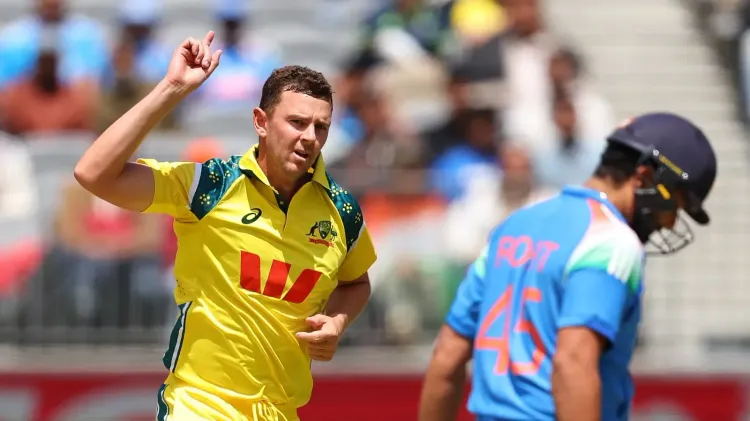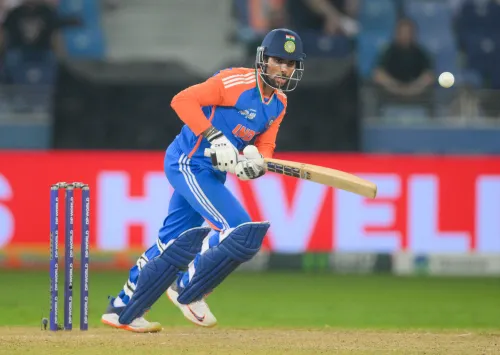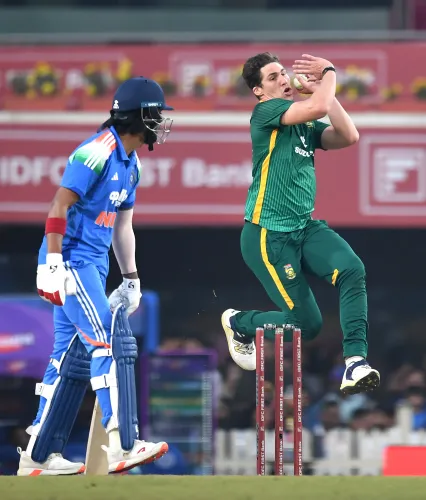Did Mitchell Marsh's Leadership Lead Australia to a 7-Wicket Victory Over India?

Synopsis
Key Takeaways
- Mitchell Marsh demonstrated effective leadership, guiding the team to victory.
- India's top order collapse significantly impacted their total.
- Australia's bowlers were effective, restricting India to 136 runs.
- The rain disruptions altered the match dynamics.
- Strategic batting changes by both teams influenced the game outcome.
Perth, Oct 19 (NationPress) Captain Mitchell Marsh led Australia's successful chase as the home team secured a convincing seven-wicket victory in the first ODI against India at Optus Stadium, taking a 1-0 lead in the three-match series.
In his inaugural ODI as captain, Shubman Gill faced a tough start, marking a loss in his first leadership role in the 50-over format.
Batting first, India encountered a significant top-order collapse, with veteran players Rohit Sharma and Virat Kohli struggling to make an impact in their highly anticipated return to international cricket. Due to rain interruptions, the match was shortened to 26 overs per side, resulting in India scoring 136 for 9.
The revised target for Australia was set at 131 runs in 26 overs, which they achieved with 29 balls to spare.
Despite facing early setbacks, similar to India's first innings, the hosts quickly regained their footing. Arshdeep Singh struck early to dismiss the dangerous Travis Head, while Axar Patel ended Matthew Short's innings in the eighth over.
Nevertheless, the momentum remained with Australia as Mitchell Marsh and wicketkeeper batter Josh Philippe steadied the ship.
A strategic bowling change by India's captain brought in Washington Sundar, which resulted in another breakthrough as Philippe departed after scoring 37 runs off 29 balls.
However, the Indian bowlers could not contain the Australians any further, as Marsh's unbeaten 46, alongside contributions from Philippe and Matt Renshaw, led the hosts to victory.
Earlier, India set a total of 136 runs in 26 overs, following interruptions due to rain. They struggled to build momentum early on, losing their top order quickly during the powerplay.
Notably, international returns Rohit and Kohli were dismissed for just 8 and 0 runs, respectively, while Shubman Gill, in his first match as captain, managed a mere 10 runs off 18 balls.
Only KL Rahul and Axar Patel surpassed the 30-run mark, with Nitish Kumar Reddy's explosive hitting in the final over helping India reach 136/9.
Brief Scores: Australia, 131/3 in 21.1 overs (Mitchell Marsh 46, Josh Philippe 37; Arshdeep Singh 1-31, Axar Patel 1-19) beat India, 136/9 in 26 overs (KL Rahul 38, Axar Patel 31; Josh Hazlewood 2-20, Matthew Kuhnemann 2-26) by seven wickets via DLS method.
vi/bc










